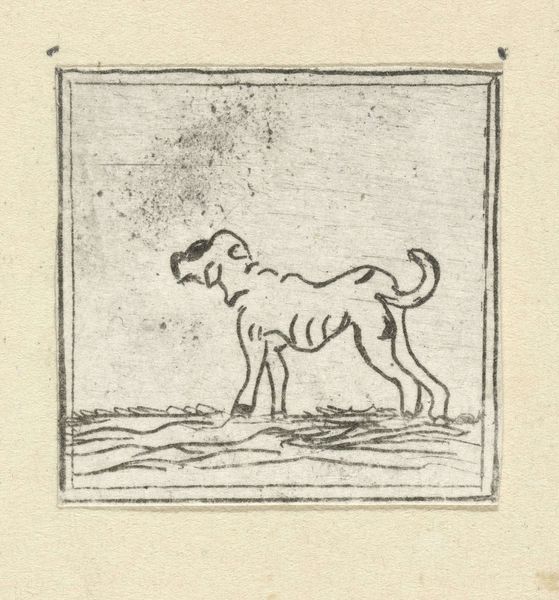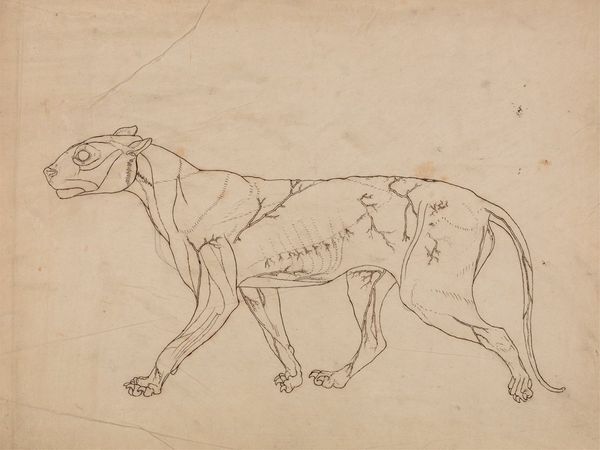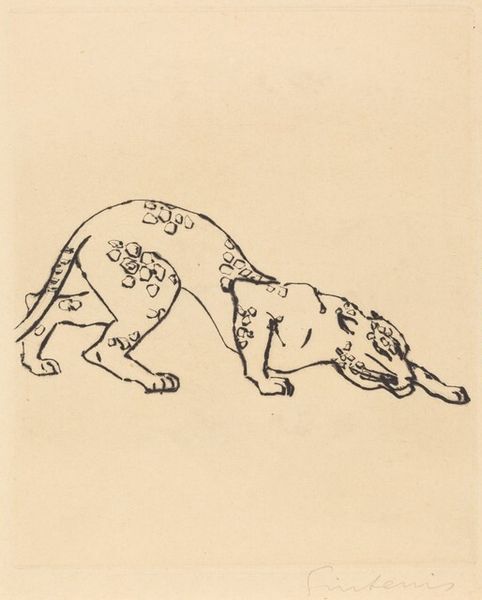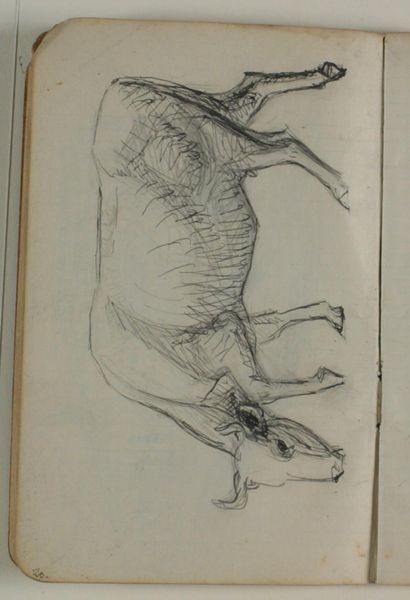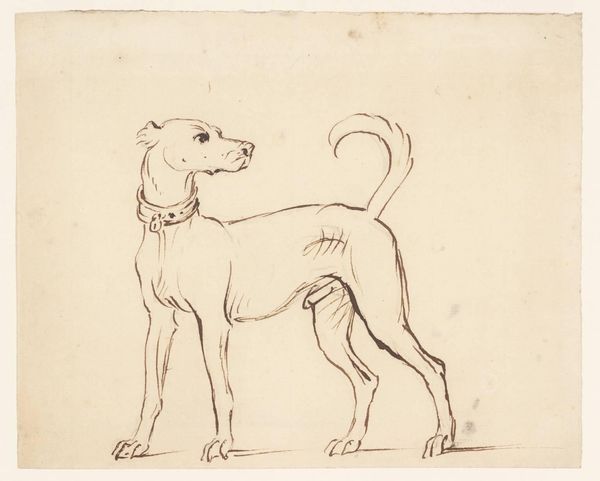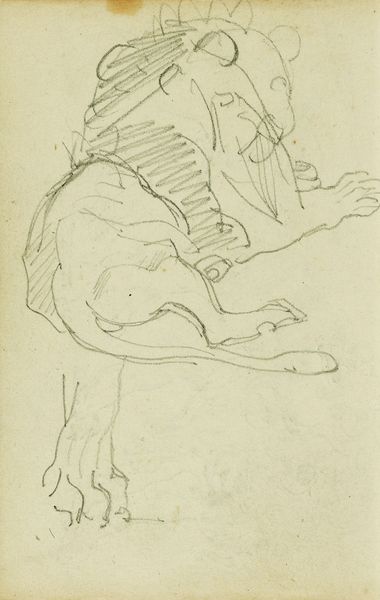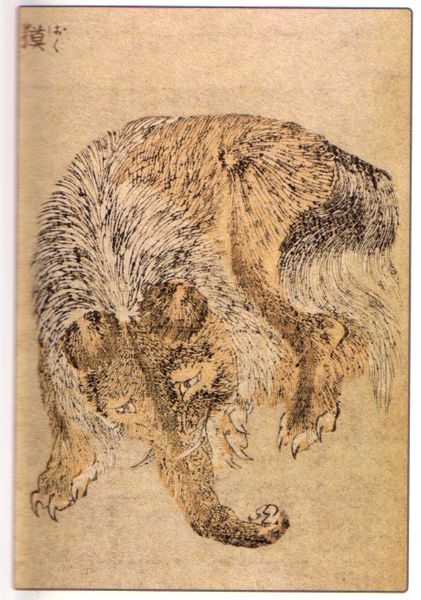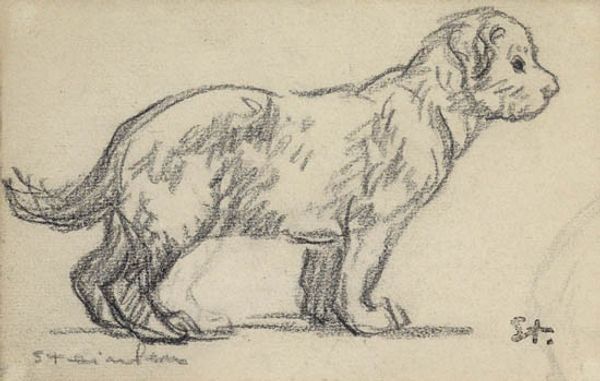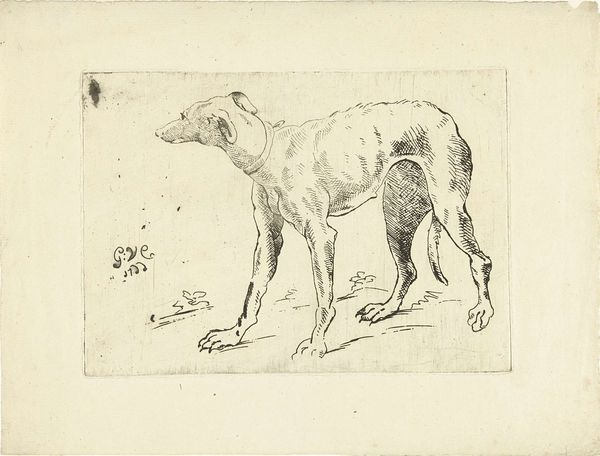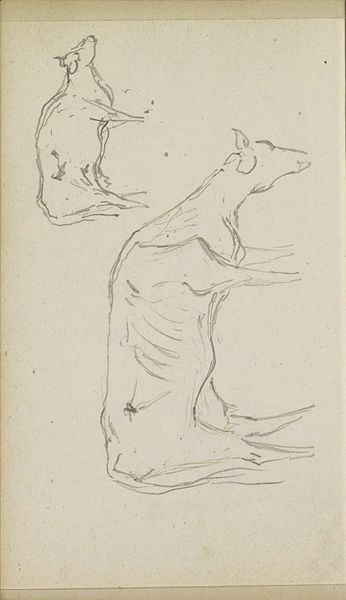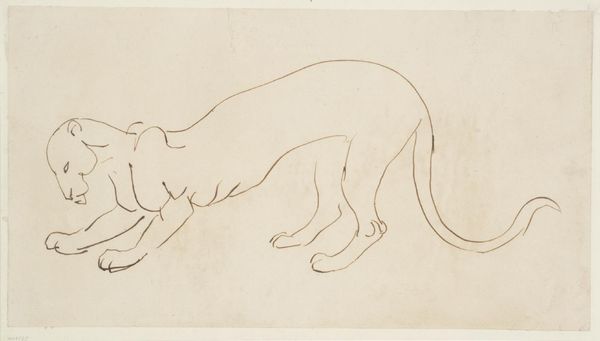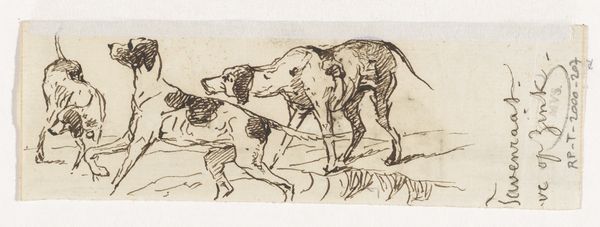
drawing, pen
#
drawing
#
animal
#
pen sketch
#
figuration
#
pen
Dimensions: height 78 mm, width 68 mm
Copyright: Rijks Museum: Open Domain
Curator: What a charming and somewhat melancholic sketch! Editor: Indeed. This is titled "Olifant," attributed to Gerrit Willem Dijsselhof and thought to be created sometime between 1876 and 1924. It's currently held in the Rijksmuseum collection. We see it's executed using pen and ink on paper. Curator: There's a raw quality to the linework, a sketch that suggests movement, as if capturing the animal in its natural habitat, perhaps as a study for a larger work. I also immediately notice the bird perched on its back, hinting at relationships of mutual aid in nature but, further, invoking perhaps more loaded symbolic references regarding labor and exploitation within a global economy? Editor: That's interesting. I'm immediately drawn to the way Dijsselhof has rendered the elephant's texture—not smooth, as one might expect, but almost striped, suggesting the rough skin. I want to consider the tools that the artist is using, and consider how those tools affect this representation, but I’m also interested in what kind of paper? And if there are, if any, intentional connections between those artistic material decisions, and the subject matter at hand. Curator: Well, considering the timeframe, the late 19th, early 20th century, one can't help but think about colonial narratives and the capture and trade of exotic animals for Western consumption. Perhaps that accounts for that melancholy you pointed out? What is the relationship between the Western artist capturing the likeness of the elephant, and the reality of its extraction? The scale is small, humble almost. Editor: Right, exactly! The economy of materials in this piece feels purposeful. By employing this minimalistic aesthetic and focus, Dijsselhof underscores the animal's pure form, and how human endeavor leaves its own traces. What stories of consumption and colonialism hide beneath the surface that this labor reveals? Curator: It invites reflection on our entangled relationship with the natural world and our role in shaping it— often through unequal distributions of labor and materials, don’t you think? Editor: Absolutely. A simple sketch can open such expansive thought. It encourages us to reconsider our perceptions of both animal and material histories and exploitation of labor.
Comments
No comments
Be the first to comment and join the conversation on the ultimate creative platform.

